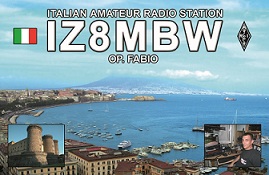Weather Station realized with Raspberry Pi and ESP32 boards located in Napoli, ITALY
Weather conditions are updated every 60 seconds
Outdoor actual climate conditions
Temperature: 21.8 °C (71.24 °F)
Humidity: 50.9%
Heat Index: Temperature too low for Heat Index value
Indoor actual climate conditions on different rooms
Studio (shack) Temperature: 21.2 °C (70.16 °F)
Studio (shack) Humidity: 55%
Studio (shack) Heat Index: Temperature too low for Heat Index value
Living Temperature: 21.3 °C (70.34 °F)
Living Humidity: 58%
Living Heat Index: Temperature too low for Heat Index value
Bedroom Temperature: 20.9 °C (69.62 °F)
Bedroom Humidity: 59%
Bedroom Heat Index: Temperature too low for Heat Index value
Actual Barometric Pressure (normalized to sea level): 1012.0 hPa
Weather Station Informations
The weather station is realized with high accuracy digital sensors connected directly to the Raspberry Pi GPIO or connected to ESP32 boards using ESPEasy firmware.
Raspberry Pi has a GPIO (General Purpose Input Output) port where the sensors are connected on, also ESP32 board has a GPIO.
The Studio indoor sensors are in the same room of the Raspberry Pi, the outdoor sensors are out to my balcony connected via a Category 6 Ethernet cable which has a length of 10 meters.
Others Temperature and Humidity sensors are in the bedroom and in the living room, in details these sensors are Switchbot Meter Plus (Bluetooth). Since we need to send Temperature and Humidity data of the Switchbot Meter Plus to the Raspberry Pi I'm using the ESPHome Bluetooth Proxy running on an ESP32 board, in this way the Switchbot Meter Plus sensors values are available on Home Assistant and in MQTT so the Raspberry Pi can use them as if they were attached to the Rasperry Pi.
Based on my experience with the Raspberry Pi I have tested various sensors from various brands: Sensirion SHT71, Sensirion SHT35, Sensirion SHT41, Texas Instruments TMP117, Texas Instruments TMP275, Maxim DS18B20, Maxim DS7505, Maxim MAX31826, Texas Instruments LM92, Analog Devices ADT7410, Aosong DHT22, Bosch Sensortec BMP085, Bosch Sensortec BME680.
The sensors use various digital protocols, such as I²C (also known as I2C), 1-Wire, Sbus, etc.
The values from sensors are acquired every 60 seconds from made by me shell scripts (with errors control) that writes into text files the information and are published in this website with a PHP page.
All the sensors values are also published in my LAN via MQTT and availbale in Home Assistant as private access.
Sensors in use
Outdoor Temperature and Humidity -> Sensirion SHT35 (I²C)
Studio Indoor Temperature and Humidity -> Sensirion SHT41 (I²C)
Bedroom Temperature and Humidity -> Switchbot Meter Plus
Living room Temperature and Humidity -> Switchbot Meter Plus
Atmospheric Pressure -> Bosch Sensortec BME680 (I²C)
Which sensors to use?
Since the end of 2022 I moved to a new house and so I have revised the sensors choosing more recent sensors (see list above).
In the old house I used TMP275 and MAX31826 as indoor temperature sensors and the Sensirion SHT71 temperature and humidity sensor as outdoor sensor.
Database
All the sensors values are stored into a database made with RRDtool (round-robin database tool), this database preserve the average data in this way:
1. For 24 hours: data every 5 minutes
2. For one week: data every 15 minutes
3. For one month: data every 1 hour
4. For one year: data every 6 hours
A shell script update the database with the updated sensors values every 5 minutes and export the data into XML file, the exported XML files are the data needed to generate the charts.
Charts
My idea was to publish the sensors values into interactive charts with data history, so I chose to use Highcharts. Highcharts is a charting library written in HTML5 and JavaScript. Charts represent all the data: temperature, humidity and pressure and they are published with PHP and JavaScript pages, divided in: one day, one week, one month and one year.
You can see the charts by browsing in the navigation bar at top of the page. Charts are tested on Google Chrome, Mozilla Firefox and Microsoft Edge.
For more informations you can contact me via email at iz8mbw ]at[ gmail.com. Enjoy!
Fabio Ancona, IZ8MBW
